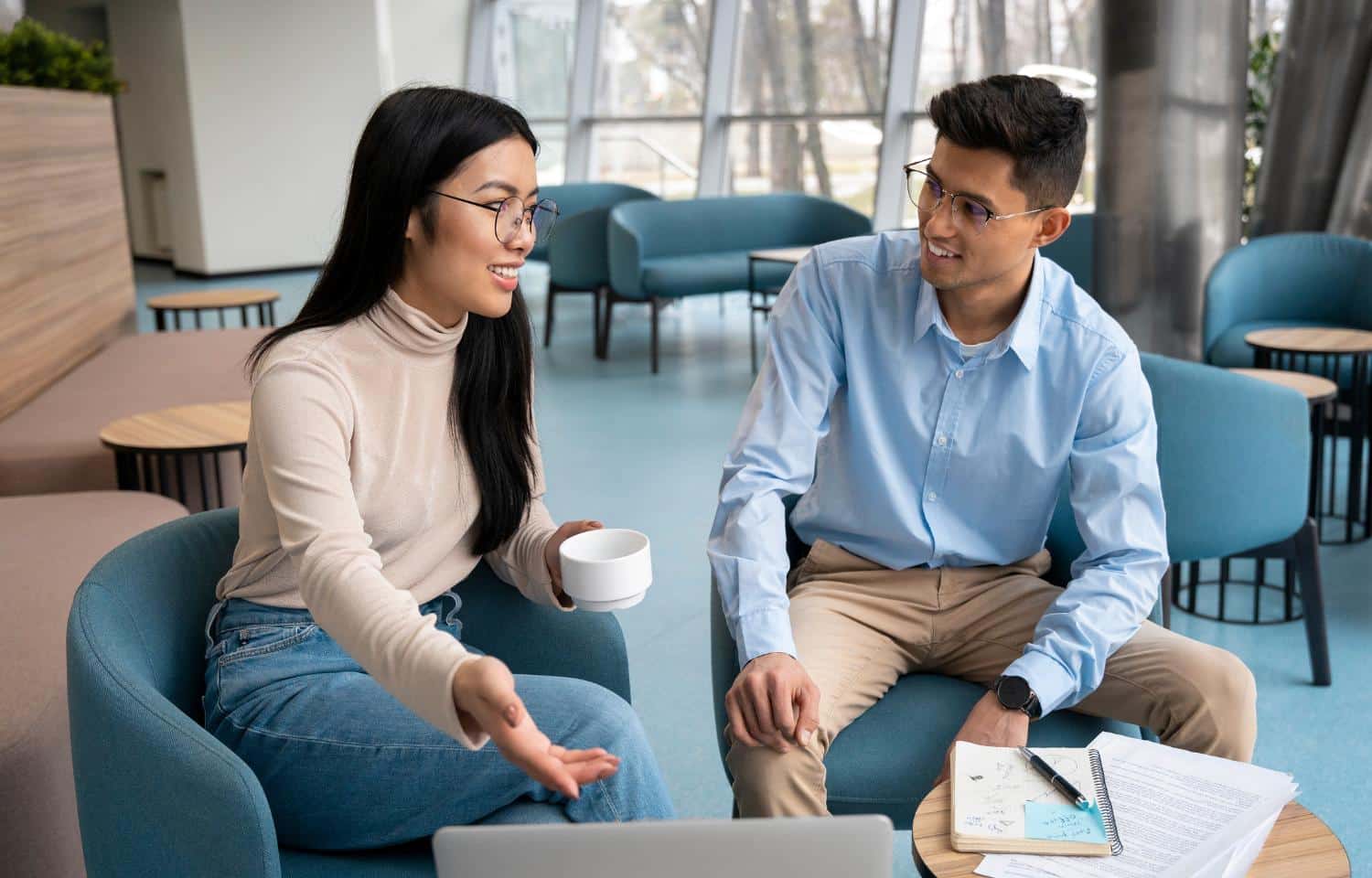Returning to the classroom after completing the Graduate Diploma in Applied Positive Psychology during retirement, Rani now uses her newfound knowledge to empower struggling students.
Vijaya Rani
Flexi-Adjunct Teacher
Graduate Diploma Applied Positive
Psychology, TSPP
Q: What made you decide to take up a course with TSPP?
I had been a teacher for 40 years before my retirement, and at that time, I was exploring opportunities for new learning. When TSPP came into view, I thought it was timely to better understand the minds and socio-emotional needs of the students and how I could tune them to be ready for learning.
As teachers, we talk about setting up a positive classroom environment. But how do we really get into that? I felt we could do a lot more, and I never had much time to focus on that before.
That’s when I decided I needed a course like GDAPP (Graduate Diploma in Applied Positive Psychology). It was to better understand how our minds work, and what motivates people intrinsically, especially during challenging times (like the Covid pandemic). I felt that many of the strategies, routines and rules we put into place for the students tend to be sometimes superficial (just for a moment) but I needed to know how to create changes on a deeper and habit-forming level.
So when I saw this course, I attended the preview and saw what would be covered in the modules (e.g. Resilience, Strength development, Mindfulness and Positive Psychology). I thought, “This is what I was looking for. Let me give it a try.”
Q: What was the most significant impact of the course on you?
Attending this course allowed me to better understand and integrate my previous ideas on what it means to develop a whole child.
For example, when I did the module on strengths development, I discovered my five best strengths and why it was more effective to work on self-improvement by tapping on these strengths first. I discovered how I could capitalise on my strengths to be a better person.
If students can also learn about their innate strengths, they can utilise them in their interactions and learning. Teachers who have been trained on a strengths approach can explore ways to bring out the best in their students and engage them more effectively during class.
The six modules that I completed gave me a refreshed perspective for a positive classroom curriculum that can be adapted, accommodated for diverse learners in any number of ways to get children more ready for learning.
When I completed the course in March 2022, I thought it was timely for me to get back into a classroom environment. I told myself, “This learning won’t make sense until I do it. I need to actually go to a school and apply it.” This opportunity came for me as a flexi adjunct teacher at a primary school.
I took on afternoon sessions for students with high needs – students lacking family support, who exhibit irregular or poor attendance. The school provides for a programme after school, to support and engage students in meaningful learning activities. I saw this as a wonderful opportunity to work with and learn together with these students.
Q: How did GDAPP change your interactions with students?
When I was an academic teacher, I was more interested in students’ academic performance. Schools were more academic outcomes driven then. I was also teaching graduating classes in secondary schools, where I had to deliver results.
To be fair to teachers, they don’t have much time as they have other school duties and responsibilities besides classroom teaching and learning. To care for the whole child, a teacher needs quality time as well as space and time for conversations, to support learners’ needs.
I feel very privileged with this second chance – I call my post-retirement work a second chance – how would I do things differently going back to school in a new role?
I now would want to prepare the child for learning first. I would take time to understand them – their social, emotional, psychological needs. Getting them ready to learn means helping them understand why it’s important for them to learn. And not only why, but what is it all about? And what are the implications of not learning? If they can’t read, then do they want to become dependent on someone else to read for them?
I have observed that young children may speak like adults and regurgitate what they hear, but in terms of cognitive development, they’re not so able to think ahead or realise the implications of their actions. That’s why we need to bring them into that realisation and understanding first. Once they are given this opportunity, they can then pause and think before making a decision.
Providing them with milestone affirmations to celebrate their mini-successes will boost their self- confidence and assure them that they are growing in the right direction.
The teacher just has to continue believing in them and think of possibilities to engage them and slowly move them forward. It can be crazy sometimes! But you have to know your learners, provide time to hear from them, and what they are thinking about. Don’t assume they’re ready and start teaching, only to wonder “Why are they not learning?” Start from where they are, and then move on. This is now my ‘intentional and conscious’ approach to learning.
No two problems can be dealt with in the same way. And so knowing and understanding the context is so critical for appropriate strategy and application.
Q: Can you share examples of how you applied Positive Psychology in the classroom?
I did a gratitude exercise with my students, where I bought containers for them to use as gratitude jars.
To start the exercise with them, I asked them to share their thoughts about home and school. They mentioned that they sometimes didn’t like school, because subjects are difficult. Then I asked them to think about anything good that was going on.
One of them said, “I love my grandfather. He looks after me.” I got him to write it down and put it into his jar. I got all the students to put their positive thoughts and experiences into the jar, and we carried on doing this once a week. After 10 weeks, I got them to open up their jars. And guess what? They started sharing excitedly with the group. And a key theme that came out was family.
In turned out, family was the blessing, and was also the root cause for many issues in school and their lives. Family was the key source of support, but also the cause for conflicts, for trust being betrayed.
I realised it was so important for the schools to address family when they are working with these high needs students. We cannot isolate the family issues when supporting and understanding these pupils because they are so integral to their wellbeing.
Another key idea that came up was peers. When they are sick, a friend calls them or keeps them updated on what had happened. And the third thing that came up was teachers. Teachers who cared for them.
I saw how just one simple activity can be used for so many purposes. With the gratitude jar, you can identify the key pillars supporting or influencing their lives. You can understand these children better – who or what motivates them? Who are the powerful or significant voices in their lives?
Understanding the pupils and where they’re coming from through the gratitude jar was an eye-opening experience for me. I learnt that the teacher is only one aspect of their lives. A child spends easily half or more than half with the family (and during holidays, all the more). So if you detach the school from the home in managing issues, you won’t be able to address them effectively.
Q: What effects have you observed among your students?
The primary school that I’m working with opened up this high needs programme to support disadvantaged students. I believe many schools provide similar programmes. It includes a range of students from different levels, and many of them haven’t experienced a lot of positive experiences in their lives. They have simple family lifestyles, and often face a lot of hardships and sometimes insufficient income. They may not even have enough pocket money for food. My role here is to facilitate their learning on things like how to regulate their emotions and thoughts, and how to stay motivated when things get challenging.
Since we started the programme, we have been seeing more regular attendance from these students. They feel happy to receive the affirmations and to engage and showcase their talents beyond academics. They become progressively more positive and engaged, and it gives them and the school hope.
It will take a while to see concrete evidence of these improvements, and it depends on many factors including the child’s maturity, psychological development, and ability to understand what they are receiving. There will be ongoing challenges for these students. But somehow, when they see adults who are providing hope, space, and ways for them to grow, they won’t give up on themselves so easily.
Q: What advice would you give to people who are not sure whether it is worthwhile to pursue further education?
The only constant today is change. So we have to keep one step ahead to be relevant and contributing especially in an aging population.
Schools have well established processes and structures in place to manage their operations, but the know-how and especially the know-why could be given, I believe, equal contextual emphasis. At the moment, things seem more reactive than proactive. I would like for us to be more proactive about this, where teachers go into the classrooms with a good understanding of their learners’ interests, needs and emotions. And knowledge of positive psychology will hold teachers well in providing and enhancing the classroom climate for their diverse learners.
Teaching itself is a journey of discovery and exploration. I wouldn’t have been talking like this 10 years ago. It comes with experience and invaluable opportunities to keep on learning. So, when new and younger teachers are not able to look far, it is quite natural. They just have to be given learning opportunities to grow as well.
Inspired to embark on your own transformation journey? Find out more on the course that Rani completed.


